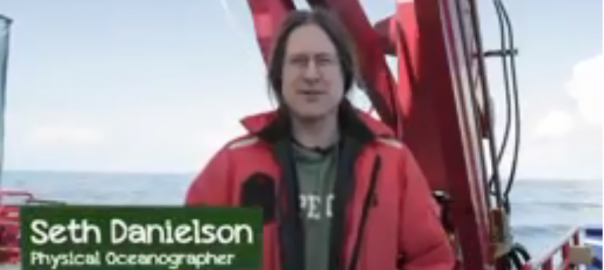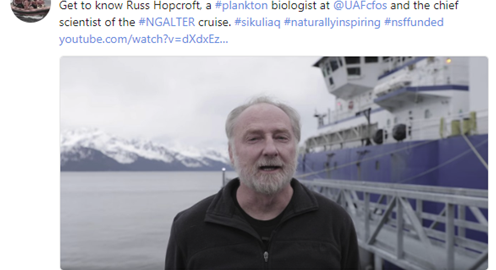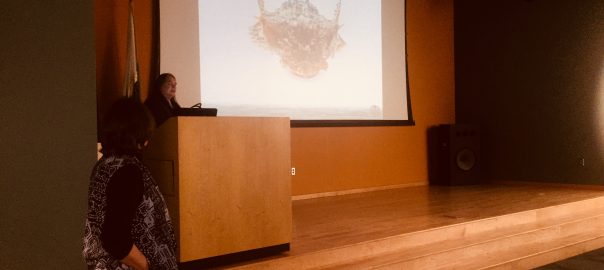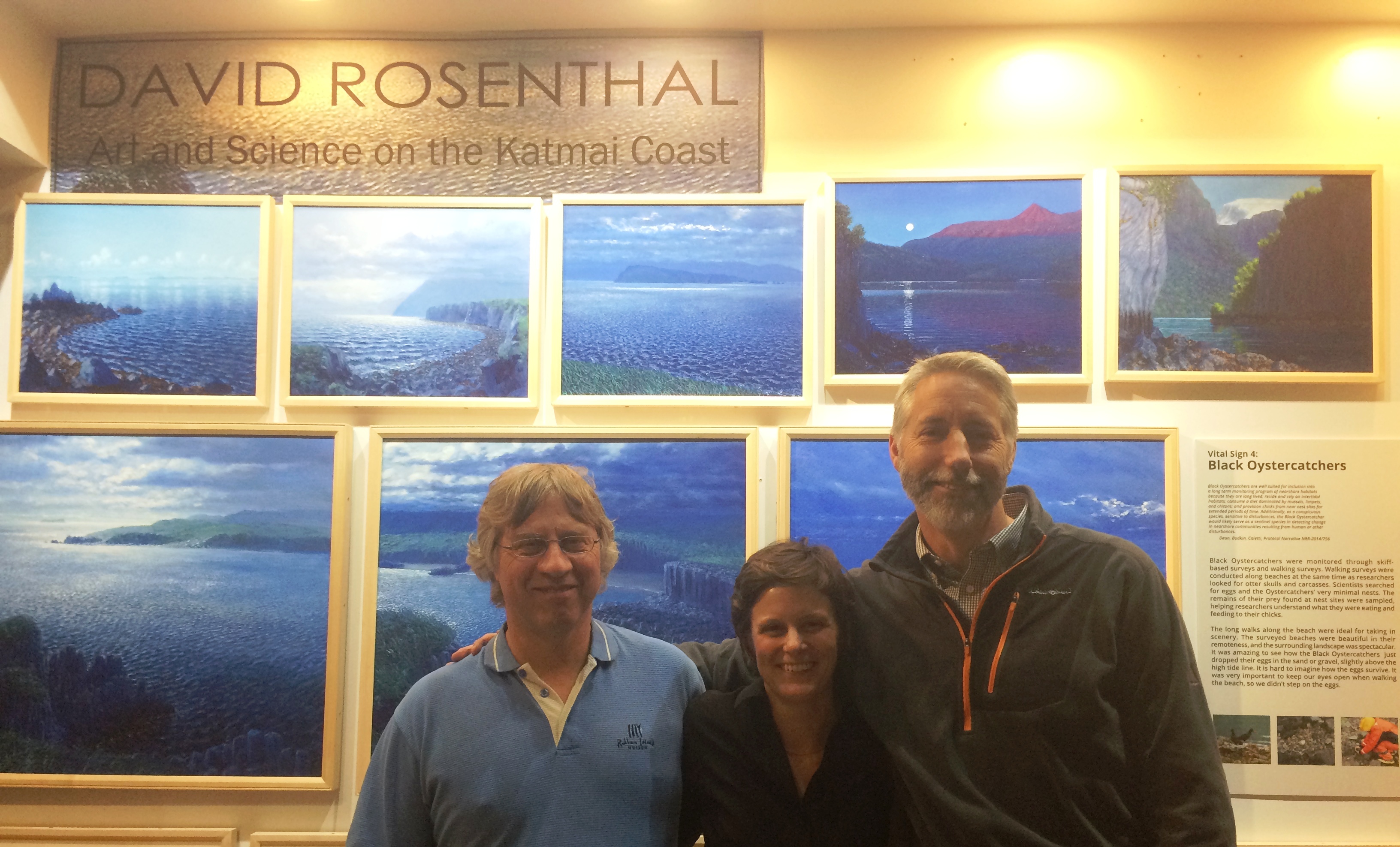What does the Prince William Sound ecosystem look like more than two decades after the Exxon Valdez oil spill? According to NOAA Fisheries scientists and partners who have been monitoring the ecosystem since the spill occurred in 1989, the answer is complicated. It’s a picture that includes loss, recovery, change and persisting conditions.
A newly published Special Issue of Deep Sea Research II, includes 19 research papers on the Sound ecosystem. The work of this collaborative group of NOAA Fisheries scientists and other agencies and organizations is being conducted under the Gulf Watch Alaska and Herring Research and Monitoring programs funded by the Exxon Valdez Oil Spill Trustee Council. Findings from these programs are providing resource managers with important insights for recovery and protection of ecosystems after major oil spills. You can read more about the Gulf Watch Alaska research papers and other studies in the Special Issue of Deep Sea Research II links below.
The NOAA Fisheries Highlights has featured a series of articles about a few of the papers authored by NOAA Fisheries scientists. Read the articles to learn more.
Gulf Watch Alaska publications
Aderhold, D.G.R, Lindeberg, M.R., Holderied, K., Pegau, S.W., 2017. Introduction: Spatial and temporal ecological variability in the northern Gulf of Alaska: What have we learned since the Exxon Valdez oil spill? Deep-Sea Research Part II.
DOI:10.1016/j.dsr2.2017.11.015
Batten, S.D., Raitsos, D.E., Danielson, S., Hopcroft, R., Coyle, K., McQuatters-Gollop, A., 2017. Interannual variability in lower trophic levels on the Alaskan Shelf. Deep-Sea Research Part II.
DOI:10.1016/j.dsr2.2017.04.023.
Bishop, M.A., Eiler, J.H., 2017. Migration patterns of post-spawning Pacific herring in a subarctic sound. Deep-Sea Research Part II.
DOI:10.1016/j.dsr2.2017.04.016.
Bodkin, J.L., Coletti, H.A., Ballachey, B.E., Monson, D.H., Esler, D.E., Dean, T.A., 2017. Variation in abundance of Pacific Blue Mussel (Mytilus trossulus) in the Northern Gulf of Alaska, 2006-2015. Deep-Sea Research Part II.
DOI:10.1016/j.dsr2.2017.04.008.
Bowen, L., Miles, A.K., Ballachey, B., Waters, S., Bodkin, J., Lindeberg, M., Esler, D., 2017. Gene transcription patterns in response to low level petroleum contaminants in Mytilus trossulus from field sites and harbors in southcentral Alaska. Deep-Sea Research Part II.
DOI:10.1016/j.dsr2.2017.08.007.
Cushing, D.A., Roby, D.D., Irons, D.B., 2017. Patterns of distribution, abundance, and change over time in a subarctic marine bird community. Deep-Sea Research Part II.
DOI:10.1016/j.dsr2.2017.07.012.
Esler, D., Ballachey, B.E., Matkin, C., Cushing, D., Kaler, R., Bodkin, J., Monson, D., Esslinger, G., Kloecker, K., 2017. Timelines and mechanisms of wildlife population recovery following the Exxon Valdez oil spill. Deep-Sea Research Part II.
DOI:10.1016/j.dsr2.2017.04.007.
Lindeberg, M.R., Maselko, J., Heintz, R.A., Fugate, C.J., Holland, L., 2017. Conditions of persistent oil on beaches in Prince William Sound 26 years after the Exxon Valdez spill. Deep-Sea Research Part II.
DOI:10.1016/j.dsr2.2017.07.011.
McKinstry, C.A.E., Campbell, R.W., 2017. Seasonal variation of zooplankton abundance and community structure in Prince William Sound, Alaska, 2009-2016. Deep-Sea Research Part II.
DOI:10.1016/j.dsr2.2017.08.016.
Moran, J.R., Heintz, R.A., Straley, J.M., Vollenweider, J.J., 2017. Regional variation in the intensity of humpback whale predation on Pacific herring in the Gulf of Alaska. Deep-Sea Research Part II.
DOI:10.1016/j.dsr2.2017.07.010.
Moran, J.R., O’Dell, M.B., Arimitsu, M.L., Straley, J.M., Dickson, D.M.S., 2017. Seasonal distribution of Dall’s porpoise in Prince William Sound, Alaska. Deep-Sea Research Part II.
DOI:10.1016/j.dsr2.2017.11.002″,
Olsen, D.W., Matkin, C.O., Andrews, R.D., Atkinson, S., 2017. Seasonal and pod-specific differences in core use areas by resident killer whales in the Northern Gulf of Alaska. Deep-Sea Research Part II.
DOI:10.1016/j.dsr2.2017.10.009.
Stocking, J., Bishop, M.A., Arab, A., 2017. Spatio-temporal distributions of piscivorous birds in a subarctic sound during the nonbreeding season. Deep-Sea Research Part II.
DOI:10.1016/j.dsr2.2017.07.017.
Straley, J.M., Moran, J.R., Boswell, K.M., Vollenweider, J.J., Heintz, R.A., Quinn II, T.J., Witteveen, B.H., Rice, S.D., 2017. Seasonal presence and potential influence of humpback whales on wintering Pacific herring populations in the Gulf of Alaska. Deep-Sea Research Part II.
DOI:10.1016/j.dsr2.2017.08.008.































